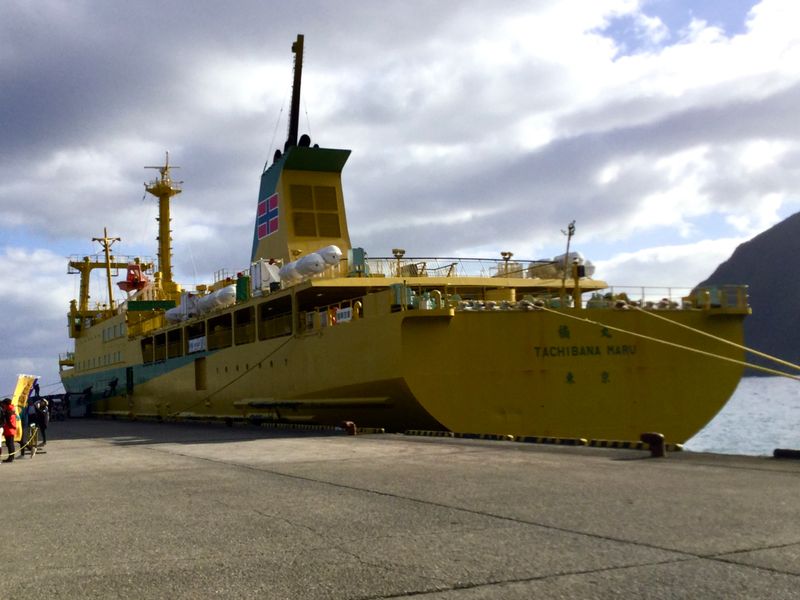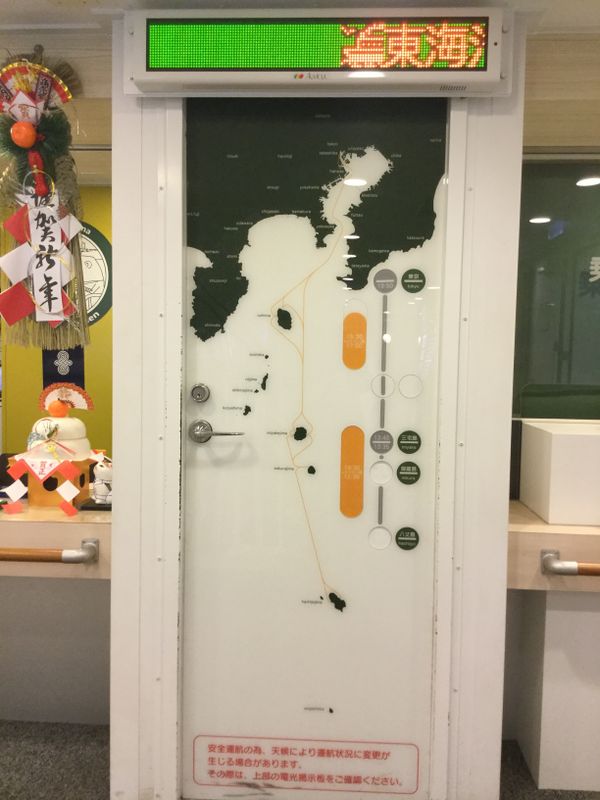Mar 17, 2020
How to enjoy slow ferry travel to Izu Islands

Tachibana Maru ferry docked at Sokodo Port, Hachijojima
Why travel by ferry?
In the past year, I’ve been trying to live a lifestyle that’s kinder to the environment. In preparation for a trip to one of the Izu Islands off Tokyo, I looked at the carbon footprint of the trip. The International Civil Aviation Organization ICAO carbon emissions calculator indicates that the carbon footprint of Haneda to Hachijojima flight is 41.5 kg. I wondered if that is a lot, so I checked the comparable amount churned out by a slow ferry. Salon looked at the most carbon efficient means, and by their calculation, on a slow ferry, my carbon footprint is perhaps only 9 kg. So that settled it.
Another reason to take the ferry is the experience itself. While you may see spectacular views of Tokyo as you depart by plane, the ferry gives you time to leisurely observe the seascape and enjoy the ocean air. Once aboard and settled into your cabin, put your things in a locker, go out on deck to see amazing views of Tokyo as it recedes into the distance (there's no better view of Rainbow Bridge), and you enter the Phillipine Sea. You might be lucky and spot whales and other sea life along the way. Even if you don’t, the looming islands as you approach are breathtakingly beautiful.
The ferry trip also gives you a perspective into the experience of the islanders, spending a whole day or overnight on the open ocean to reach Tokyo proper. For centuries before modern air travel, this was the only connection between these far flung islands and the capital.

The ferry's ports of call and timings
How to enjoy your trip
If you are prone to seasickness, dried ginger and ginger candies can reduce symptoms. Another way is to go on deck, inhale the sea air, and look towards the horizon. Seasickness is caused by the conflict between sensory data – your eyes say your cabin looks still, but your inner ear says you’re moving, and this results in queasiness. So, if you fix your gaze on the horizon, your senses harmonize. Some people might find it difficult to keep down food. In preparation for my trip I bought a bag of sembei and ginger ale. I adjusted within an hour.
Overnight ferries may be challenging for people who need proper shuteye. The cabins don’t have doors, so there is noise from fellow passengers. Ear plugs are a good idea. On the Tokai Kisen bound for Hachijojima, the lights go out at 11 p.m., and are turned back on at 5 a.m. Another thing to bring along if you’re a light sleeper is an eye mask. I slept well with my jacket pulled over my head.
How to book
The booking process for the Tokai Kisen ferry is straight forward, and for those who are not fully literate in Japanese, available in English. Discounts are available for advanced booking, and for groups of 15 passengers.
Sure, it's a slow journey, but if you have time, it's an amazing experience to see the Izu Islands. It was such a great experience that I'm tempted to take my next trip by ferry to other islands in the Izu chain, and farther afield.
Editor's note: Tokai Kisen Co., Ltd. issued a list of measures (dated 2020.02.28) they have implemented in light of the new coronavirus outbreak. They can be seen in here (in Japanese).



0 Comments